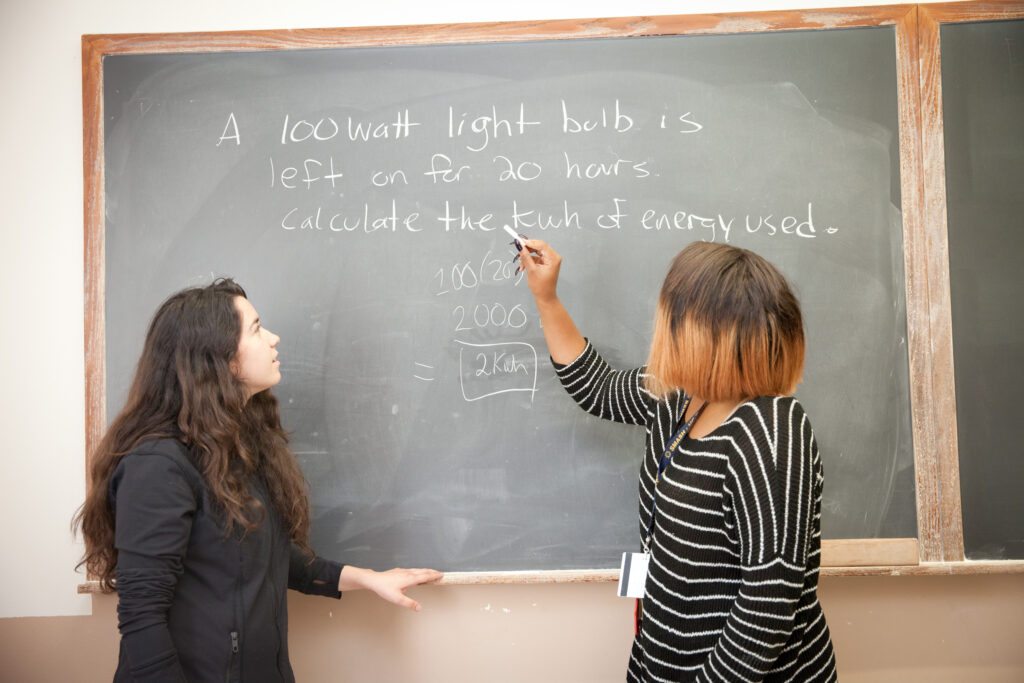Modeling (Creating and Using)

Bloom's Level
Use
Setting
Activity
Technology
Related Strategies
Description
Modeling is an instructional strategy that helps students to visualize their understanding by creating or evaluating a concrete representation. By creating and using models during the learning process, students are able to make connections between concepts or ideas and critically examine different parts of the model. The process of creating a model, whether students are diagraming, sketching, or using physical materials, allows students to explore and demonstrate what they know. Student-created models also provide an artifact for formative and summative assessment. Modeling is often used in STEM subjects (Science, Technology, Engineering, and Math), but it can be used across all disciplines and grade levels.
When To Use It
As a learning strategy, use modeling when you want students to:
- represent concrete and abstract ideas
- show connections and relationships
- design a 2D or 3D representation of a real-world process or concept
- make predictions or test cause and effect relationships
- understand unobservable phenomena
- experiment and produce data
- demonstrate content understanding and skills
- create, use, manipulate, or evaluate a model
As an instructional strategy, use modeling when you want to:
- assess student understanding of concrete or abstract ideas
- demonstrate a real-world process or concept for students
- provide an alternative mode of learning for students to explore tactile or conceptual representations
How To Use It
Advance Prep
- Determine how using or creating models aligns with and supports your learning goals and objectives.
- Decide what type of model your students will use or create, and gather the necessary materials. Consider models that align best with your learning objectives, content, context, and student needs. There are many types of models that work well for specific purposes and contexts. Some examples include:
- branching tree diagram – shows an organizational scheme and relationships
- Simulation – represents a real-life process or situation
- Tactile model: provides a physical representation including component parts
- Conceptual model (concept map): shows relationships between concepts
- Process diagram: outlines steps in a process in sequential order
- Plan the sequence of activities, instructions, or guidelines for students to follow as they engage with modeling. If students are using or creating models through collaborative learning, decide whether you will strategically group students.
- Plan to provide explicit instruction to model the modeling activity. If students are creating a model using physical materials, follow your instructions and make one yourself. Likewise, if students are using a model to facilitate learning, practice using the model to ensure that the outcomes are as expected.
Implementation
There are many ways to implement modeling as a teaching and learning strategy. The following steps are a general sequence of activities that can be modified and elaborated upon to meet your specific needs.
- Introduce the modeling activity and explain how students will engage with the model or create their own models. Show students what is expected and explain the goals of the activity.
- Provide necessary physical and instructional materials for students to use.
- Allow time for students to practice, discover, experiment, manipulate, and evaluate as they engage with the modeling activity.
- Debrief the activity with a journal reflection or whole class discussion. Have students share and demonstrate their models as appropriate. Encourage them to explain how they developed their models, what the different elements mean, relationships, processes, etc. Have them discuss what they discovered or learned as a result of creating or manipulating a model.
Pros
- Promotes the development of content understanding and skills
- Promotes scientific and systems thinking
- Helps students to question, organize, and visualize their understanding
- Helps students understand connections between ideas
- Promotes deep, long-lasting learning
- Meets the needs of diverse learners by offering an alternative mode of learning and assessment
Cons
- Student- and teacher-created physical models may require a lot of materials, time, effort, and skill to produce
- Modeling activities require deliberate practice and scaffolding before students are able to use or create models effectively
Culturally Responsive Application
Because modeling offers an alternative mode of learning and assessment, it is an inclusive strategy that lends itself well to culturally responsive teaching. When students create models, they apply their background knowledge and skills to demonstrate their understanding. Modeling allows them to express their interpretation of processes or concepts, and it is a multisensory approach to learning that can address the needs of diverse learners.
Emerging English Language Support
It is important that a learning model for morphology and phonology should produce complete output forms, generate multiple outputs, assign each output a well formedness score, and discover both specific and broad generalizations.
Students with Disabilities Support
Modeling influences are ubiquitously operative within social situations, the teachers or other alternative agents who fails to apply them in an orderly fashion foregoes a powerful force for change.
Subjects
2.1 K-8 mathematics, 2.2 High school number & quantity, 2.3 High school algebra, 2.4 High school functions, 2.5 High school geometry, 2.6 High school statistics & probability, 3.1 Earth and space science, 3.2 Life science, 3.3 Physical science, 3.4 Engineering, technology, and application of science, 4.1 Civics, 4.2 Economics, 4.3 Geography, 4.4 History, 5.1 Computing systems, 5.2 Networks & the internet, 5.3 Data & analysis, 5.4 Algorithms & programming, 5.5 Impacts of computing
- ABOUT US
- AREAS OF FOCUS
- Equity in CS EducationAdvancing access and equity in K-12 computer science education
- Inclusive Pathways to TechSupporting inclusive and alternative pathways to tech jobs
- Diversifying Entrepreneurship & VCInvesting in gap-closing companies and funds
- Equitable Tech PolicyAdvancing policy, regulation, and accountability to drive systemic change
- PUBLICATIONS
- RESPONSIBLE AI
- RESOURCES